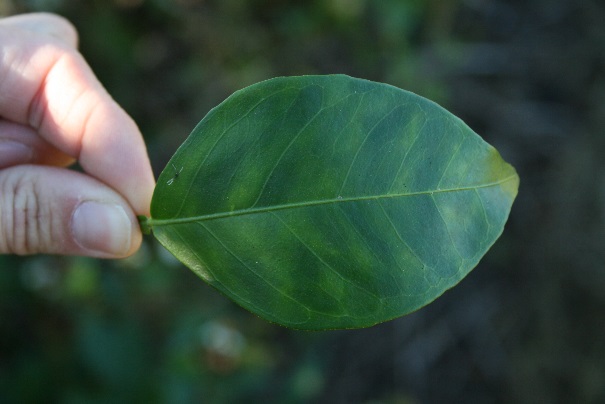Growing Citrus in the HLB Era
When someone thinks about Florida agriculture, citrus is likely one of the first things that comes to mind. Citrus is an important economic crop to the state, providing food, creating thousands of jobs, forming beautiful scenery for visitors, and producing multiple byproducts (e.g., cattle feed and citrus oils). It is not just important economically; citrus is also commonly grown in residential landscapes for pleasure.
Since the early 2000s, growing citrus has become much more challenging due to plant disease pressure. In 2005, the incurable bacterial disease Huanglongbing (HLB), also known as citrus greening, was first confirmed in a residential tree in south Florida. Today, HLB has spread throughout all of the commercial citrus growing regions of south Florida and is in parts of north Florida as well.
HLB is the most devastating disease affecting Florida citrus, and it threatens the survival of the citrus industry. Once a tree becomes infected, there is no cure. The risk of a citrus tree becoming infected with HLB is high and ultimately unavoidable. Disease spread is endemic in Florida; therefore, the tree will become infected. Growing a citrus tree during the HLB era is an investment of time, money, and resources with no guarantee of success.
Due to Florida's humid climate, fungal diseases are commonly observed on residential trees. Greasy spot, Alternaria brown spot, melanose, and citrus scab are fungal diseases that can be managed by removing dead wood from trees, keeping the area underneath the tree clean (remove dead leaves, etc.), and applying copper fungicides. Other diseases common in Florida citrus are Phytophthora root rot, citrus canker, and HLB.
HLB
HLB symptoms can be found on leaves and fruit. Leaves have a blotchy mottle pattern and yellow and/or corky veins. Yellow veins are also caused by other citrus diseases and disorders; therefore, the presence of yellow veins alone should not be used to diagnose HLB. Fruit from an HLB-affected tree will be small, misshapen, or lopsided, and can have a color inversion. Overall, an HLB-affected tree will have dieback (branches without leaves), be stunted, produce poor fruit quality, and will not appear healthy.

Figure 4. Blotchy mottle symptom of HLB.
Credit: Jamie D. Burrow, UF/IFAS
HLB is spread from tree to tree by the Asian citrus psyllid . When a psyllid feeds on a citrus tree, it is able to acquire the HLB-causing bacteria and then transmit the bacteria when it feeds within the same tree or on another citrus tree. To prevent a tree from becoming infected with HLB, psyllid control is essential. Managing psyllids can be complex; they are easy to kill, but they reproduce quickly. They are also capable of long distance spread by flight or by wind. For foliar applications, horticultural oil, neem oil, malathion, or carbaryl are available for homeowner use. Regular applications will be needed for psyllid management, but the number should stay within the legal limits on the label. Once a tree becomes infected with HLB, there is no cure.
Before HLB, citrus trees would remain productive for fifty years or more. Now that we are surrounded with such widespread infection of citrus trees within the state, trees do not live as long, become unattractive, and do not produce the same quality of fruit as in the pre-HLB era. To prevent trees from becoming infected with HLB, psyllid control and proper tree care are important, but they do not guarantee complete protection against HLB. Studies in commercial growing environments have shown trees with conventional management have reduced psyllid populations compared to trees with little or no care. Most trees still become infected with HLB, even with the best care possible.
Once a citrus tree becomes infected with HLB, removal is recommended in order to reduce the source of inoculum for psyllid feeding and transmission to other trees in the area. If homeowners choose to continue to grow their infected citrus, the tree will eventually succumb to HLB and much of the fruit will be poor quality. Unfortunately, in high disease-pressure areas of the state, it is inevitable that a citrus tree will become infected with HLB. Proper psyllid management and tree care will not prevent infection but may aid in prolonging the tree's life.

